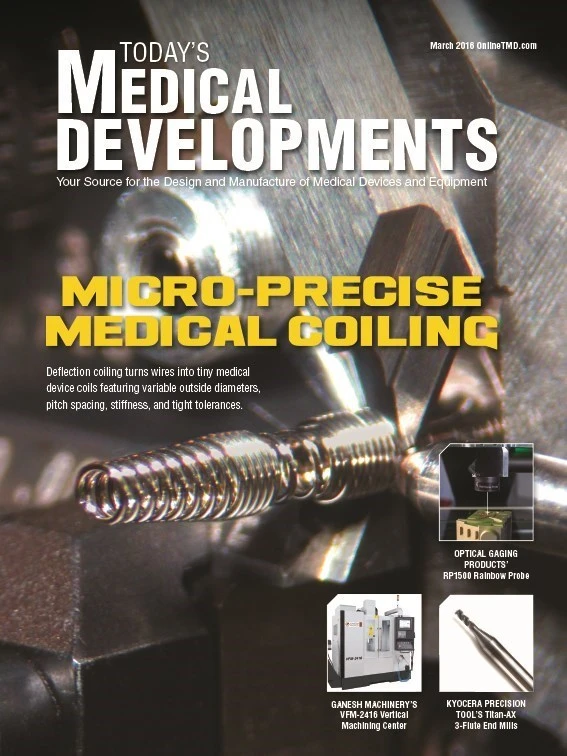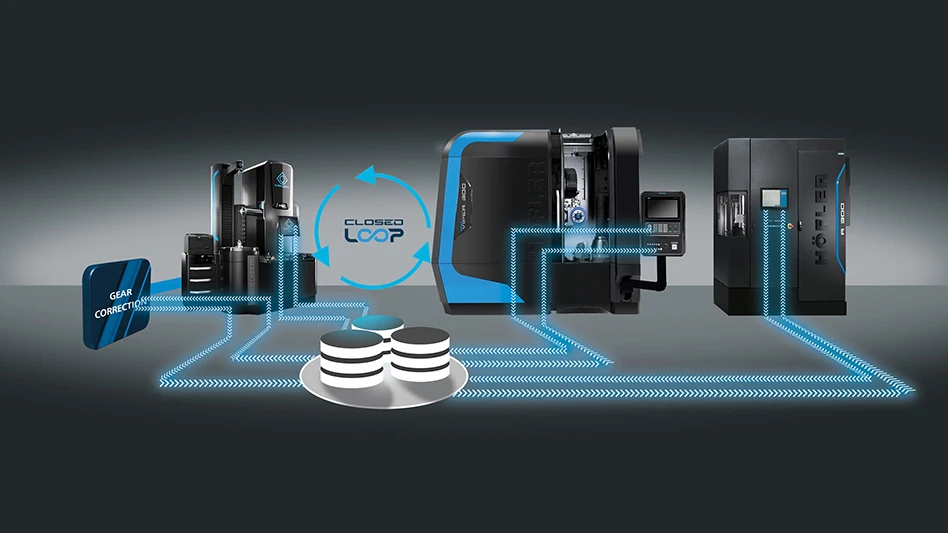
Electric friction brakes must be put in a design at the beginning of product development, especially for the size and selection of power supply. One mammography system designer learned this the hard way, not realizing the need for a braking system until he was testing the prototype. Fortunately, Deltran brake manufacturer Thomson Industries Inc. enabled him to rescue a failing design and meet the schedule for the design and prototype.
Mammography devices typically use a C-arm shaped apparatus in which an X-ray tube projects downward from the top of the C to scan the body, generating a blur-free image that could reveal indications of breast cancer. A rotating ball screw, bracketed to the tube assembly, turns slowly – usually only a few hundred revolutions per minute – to move the scanner evenly across the target area. Because the carriage must change direction many times per session, any play resulting from gaps between components affects positioning precision and image quality. This loss of motion, commonly called backlash or backdrive, is a problem, potentially causing noise, vibration, and wear.
Electric brakes also control the backlash while the system is at rest and bring things to a smooth stop if there is sudden loss of power from motor failure, power outage, or other event. Loss of electric power de-energizes the brake linings to grip a rotating plate, stopping it from turning or holding it in place once it is at rest. Re-energizing the system disengages the brake, allowing the shaft to rotate freely.
Tight specifications
Not considering the need for a braking system, the original design called for:
- Backlash less than 0.5°
- 2N-m of holding torque
- Maximum diameter of 2"
- 16VDC to 32VDC range
- Withstand 500 emergency stops
- Operation within a radiation environment
When the designer discovered the need for the brake, he also realized that these specifications would limit brake options. Since he had to adhere to original production schedules, he needed to move quickly.
Meeting the spec
Thomson’s Deltran brake line met the technical specifications and offered the Servo Brake Express Program, which ships a custom-designed brake for prototyping within two days.
Thomson engineers supplied the Deltran SB19 series spring set friction brake, meeting requirements for:
- Low backlash: Precision machining generated nearly undetectable play levels when the system is at rest, due to the tightly machined tolerances of the spline design.
- Torque density: In most cases, the available 2.0" x 1.2" available space would have limited the torque to around 10in-lb. The Deltran brake, however, provided 18in-lb. The increased torque density is the result of a high performance solenoid, which can overcome stronger spring force, and the use of a proprietary high-coefficient of friction brake pad.
- Power: 24VDC, within the 16VDC to 32VDC spec
- Radiation protection: The requirement was accomplished by expert adjustment of the lead wires
After finalizing requirements with Thomson, which included a customer/supplier system data exchange confirming that the brake met specifications, Thomson was able to ship a system for prototyping within 24 hours.
The prototype system had all the necessary adjustments other than the lead wire for radiation protection, which did not interfere with the initial prototyping and was completed the following week. In six weeks, Thomson shipped 20 final systems to be used in the production of the first 20 mammography systems. The program is now in full production, with the manufacturer shipping about 300 systems per month. Plans are also underway for a modified brake designs that will meet European power requirements.
Had the engineer not found the Deltran brake solution, he may have been dealing with backlash of a different kind.
About the author: John Pieri, senior product line manager for Thomson Deltran Clutch Brake, can be reached at 44 (0)1271.334.500.

Explore the March 2016 Issue
Check out more from this issue and find your next story to read.
Latest from Today's Medical Developments
- MedTech Innovator welcomes five new industry partners
- First Article Inspection for quality control
- The manufacturing resurgence is here – are you ready?
- Workholding solutions for your business
- ZOLLER events will showcase the company’s cutting-edge innovations
- THINBIT’s MINI GROOVE ‘N TURN Acme threading inserts
- CMMC Roll Out: When Do I Need to Comply? webinar
- Metabolic research uses Siemens gas analyzers to deliver results with 99.9999% resolutions





